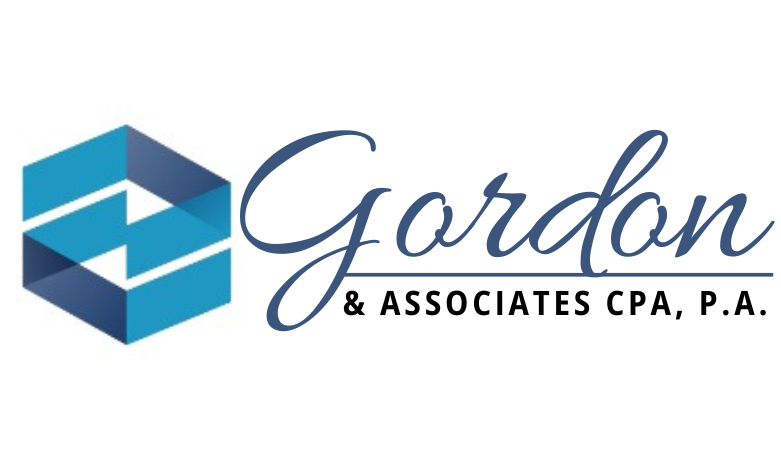Year-End Tax Planning Strategies to Reduce Your Tax Bill

As the year comes to a close, it’s time for small business owners and individuals alike to start thinking about year-end tax planning. Proper tax planning before December 31st can help you take advantage of deductions, credits, and other tax-saving opportunities that will reduce your tax bill and maximize your savings. In this blog, we’ll cover some essential year-end tax planning strategies to ensure that you’re financially prepared and can minimize your tax burden.
Why Year-End Tax Planning Matters
Tax planning isn’t something that should only happen during tax season. Year-end tax planning allows you to make informed decisions before the year ends, giving you time to implement strategies that will reduce your taxable income and help you avoid surprises when filing your tax return. By being proactive, you can take control of your finances and potentially save thousands of dollars.
Top Year-End Tax Planning Strategies
1. Maximize Retirement Contributions
One of the best ways to reduce your taxable income is by contributing to tax-advantaged retirement accounts such as a 401(k), IRA, or SEP IRA for business owners. Contributions to these accounts are typically tax-deductible, which means they lower your taxable income for the year.
- 401(k) Contributions: For 2024, the contribution limit for a 401(k) plan is $23,000, or $30,500 if you’re 50 or older. Maxing out your contributions before year-end is an effective way to defer taxes and build your retirement savings.
- IRA Contributions: You can contribute up to $7,000 to a traditional IRA for 2024 ($8,000 if you’re 50 or older). Contributions made before the tax deadline (April 15, 2025) can still count toward your 2024 tax return.
For self-employed individuals, contributing to a SEP IRA or a Solo 401(k) allows you to contribute up to 25% of your net earnings from self-employment, up to a maximum of $66,000 in 2024.
2. Take Advantage of Bonus Depreciation
If your business has purchased significant assets such as equipment, machinery, or vehicles this year, you may be eligible for bonus depreciation. Under current tax laws, businesses can deduct 100% of the cost of qualified new or used property in the year it’s placed in service. This provision allows you to reduce your taxable income significantly in the year of purchase, which can result in substantial tax savings.
Keep in mind that the bonus depreciation percentage may be reduced in future years, so if you’re planning on making large purchases, consider doing so before the year ends to take full advantage.
3. Accelerate Deductions and Defer Income
Timing is everything when it comes to tax planning. One effective strategy for lowering your tax bill is to accelerate deductions and defer income where possible.
- Accelerate Deductions: Consider paying expenses that you would normally incur in January (such as office supplies, rent, or utilities) before the end of the year. This allows you to take the deduction on your 2024 tax return.
- Defer Income: If you expect to receive income at the end of the year, you might be able to defer it until January to push it into the next tax year. This can be especially useful if you anticipate being in a lower tax bracket in 2025.
4. Harvest Capital Losses
If you have investments in your portfolio that have decreased in value, you can sell them to harvest capital losses and offset gains in other areas. Capital losses can be used to offset capital gains dollar-for-dollar, and if your losses exceed your gains, you can use up to $3,000 of the excess to offset other types of income. Any additional losses can be carried forward to future years.
This strategy is particularly useful for investors looking to rebalance their portfolios while minimizing the impact of taxes.
5. Take Advantage of Tax Credits
Unlike deductions, which reduce your taxable income, tax credits directly reduce the amount of taxes you owe. Make sure to take advantage of any available tax credits, such as:
- Energy-Efficient Home Improvements: If you made energy-efficient upgrades to your home, such as installing solar panels or energy-efficient windows, you may qualify for the Residential Energy Efficient Property Credit.
- Work Opportunity Tax Credit (WOTC): Businesses that hire individuals from certain target groups, such as veterans or individuals from disadvantaged backgrounds, may qualify for the WOTC, which can reduce your tax liability by up to $9,600 per eligible employee.
Make sure to explore all potential tax credits with a tax professional to reduce your final tax bill.
6. Review Your Estimated Tax Payments
If you’re a self-employed individual or a small business owner, it’s essential to review your estimated tax payments for the year to ensure you’ve paid enough to avoid underpayment penalties. The IRS requires taxpayers to pay quarterly estimated taxes, and failure to do so may result in fines.
Calculate your total income, deductions, and credits to ensure you’ve met your tax obligations for the year. If necessary, make an additional estimated payment before year-end to avoid penalties.
7. Donate to Charitable Organizations
Charitable donations not only help those in need, but they can also provide valuable tax deductions. Donations to qualified charitable organizations are tax-deductible if you itemize your deductions. To qualify for a deduction in 2024, you must make your donation by December 31st.
Donations can take many forms, including cash, clothing, and other assets. You can also donate appreciated stock, which may allow you to avoid paying capital gains tax on the increase in value while receiving a full deduction for the fair market value of the stock.
8. Consider a Health Savings Account (HSA)
If you have a high-deductible health plan, contributing to a Health Savings Account (HSA) is another tax-efficient way to save. Contributions to an HSA are tax-deductible, and the money grows tax-free as long as it’s used for qualified medical expenses.
For 2024, the contribution limits are $4,150 for individual coverage and $8,300 for family coverage. Individuals 55 and older can make an additional $1,000 catch-up contribution.
9. Plan for Changes in Tax Laws
Tax laws can change from year to year, and staying up to date on these changes is essential for effective tax planning. For example, certain provisions related to bonus depreciation and other tax incentives are scheduled to phase out or change in upcoming years. It’s a good idea to work with a tax advisor who can help you navigate these changes and adjust your tax strategy accordingly.
10. Set Up a Qualified Business Income (QBI) Deduction
The Qualified Business Income (QBI) deduction allows eligible small business owners to deduct up to 20% of their qualified business income. This deduction is available to pass-through entities such as sole proprietorships, partnerships, and S-corporations. To maximize your QBI deduction, it’s important to ensure that your taxable income falls within the specified limits. Consider deferring income or accelerating expenses to keep your income below the threshold if necessary.
Year-end tax planning is a crucial part of managing your business and personal finances. By taking proactive steps before the year ends, you can significantly reduce your tax burden and ensure that you’re making the most of all available deductions and credits.
At Gordon & Associates CPA, P.A., we specialize in year-end tax planning strategies tailored to your unique financial situation. Contact us today to learn how we can help you minimize your tax bill and set your business up for long-term success.
Subscribe to our newsletter to receive our latest blog directly to your inbox.
- Business Financial Management
- Regulations and Compliance
- Tax Planning and Compliance
- Tax Planning and Strategies
- Conducting a Comprehensive Year-End Financial Review: A Guide for Small Business Owners
- Developing an Effective Budget for the New Year: A Step-by-Step Guide for Small Business Owners
- Improving Cash Flow During the Holiday Season: Practical Tips for Small Business Owners
- Year-End Bonuses: Best Practices for Small Businesses
- Year-End Tax Planning Tips for Small Businesses






